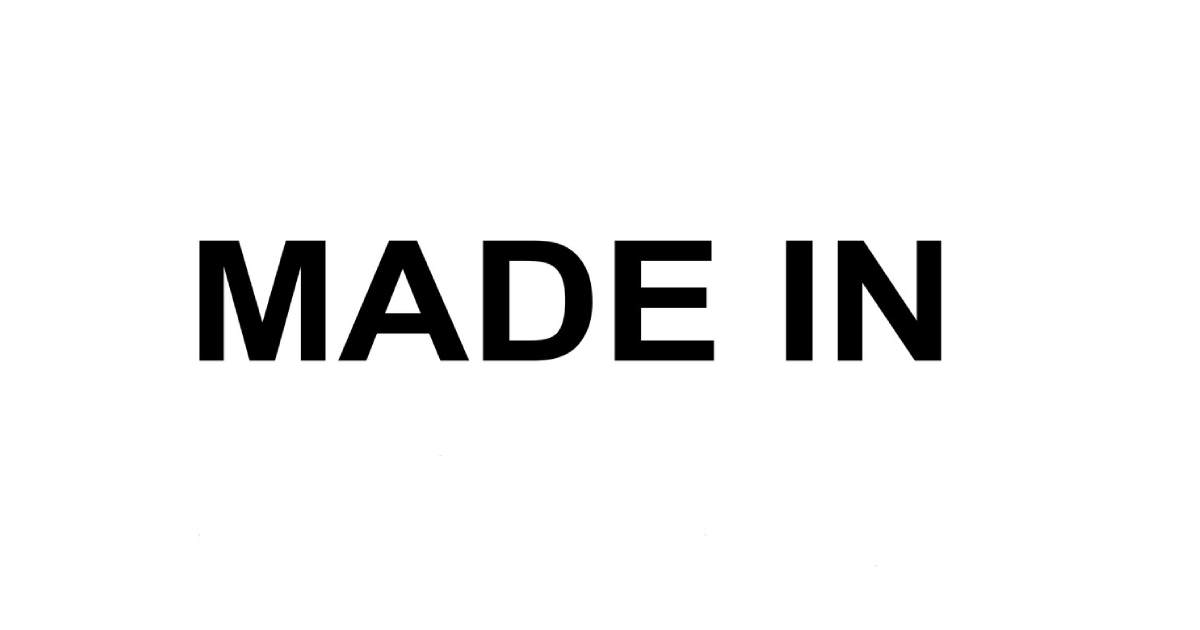Made In Review 2025
Special Discount | Additional 10% Off $150+ - Exclusive

$10 Off Regular Priced Order

Free Shipping On Orders Over $49

Special Sale — Take up to 25% off Knives and Knife Sets

Take 15% Off Your Regular Price

Sign Up And Get 10% Off First Order

MY SISTER GINA is a fantastic cook who does not suffer crappy cookware gladly. Her pans are battle-tested All Clads that have been roughed up over the years, but they take the abuse she dishes out with a shrug. Once, though, I noticed damage to a T-Fal pan of hers that wasn't up to the task; the bottom of the pan had a bit of a dome shape to it, meaning hot oil within the pan pooled around the outer rim but did not cover the higher center. Because of this, the food in the middle of the pan cooked at one temperature while food in the oil around the edge cooked at another. I like to imagine her discovering the fault with that pan and sending it flying out her back door and into the yard, where it would be put to use in the sand box.
The pans from a new company called Made In promise US-made, premium-quality cookware. The website claims that its direct-to-consumer sales model allows it to offer steep discounts for that quality, citing an example of a $69 pan from Made In which would cost $150 at a typical retailer.
It's a hefty claim. You can buy a 10-inch All Clad fry pan for $150, but at this point you might guess why I started this story by mentioning that doming (aka "concavity") issue. It was a problem I thought I was picking up on when I first started using the Made In pans. I needed to verify whether these pans were domed, and if so, how badly. It was a problem to attack with a feeler gauge.
That idea came from my brother-in-law Ben who, over beer and cribbage, realized that a feeler gauge—a handheld fan-like tool with blades of different thicknesses used to measure gap widths—would allow me to investigate any doming. Using a six-inch bench knife as a straight edge, and setting the center of that edge on the bottom center of the pan, I could tip one corner down until it touched and measure the clearance at the other end, seesaw style, and compare pans to pans.
Long story short, I measured my sister's All Clads, my piecemeal set, and five Made In pans. Out of 16 pans in total, the four with the most pronounced concavity were the Made Ins, and those four ranged between two and six times as far out as the average of all the others.
At this point, I called Wendy Dyer, International Product Director at All Clad to make some sense of what I was seeing. I kept Made In's name out of it, making a point of my desire for pan-anonymity, and asked her to interpret what I was seeing.
"A little bit of a dome is necessary. A lot is bad," she said, making me think I had somewhere between a little and a lot, depending on the pan. She mentioned that cheap pans can warp during cooking, or by going straight from the hot stove to a sink full of water, but she was a bit surprised that I saw it right out of the box.
"If they don't have control over that, it signals a lack of control over the whole production process," she said. "It would lead you to wonder: Is the nonstick going to stay in place? Is the handle secure?"
Dyer also mentioned the most common way to test for concavity is to put a straight edge across the bottom of the pan and measure the dip in the center, but allowed that my method worked fine as long as I had been consistent.
Well, I'm happy to say that the nonstick surface did not slough off of the one nonstick pan in the Made In set and that none of the handles wobbled. That said, not all the news was rosy. Most notably, a Made In representative confirmed to me over email that the pans were supposed to be flat on the bottom and sent another set of pans. Compared to the five pans I'd already tested, these were about the same or even a little worse; The only major difference would be that these five would take all five of the top slots for concavity.
I'll stress here that this amount of concavity isn't the end of the world, but I'd certainly be disappointed if I had shelled out between $400 and $500 for Made In's five-pan, two-lid set called "The Core."
Using guidelines for measuring heat management in kitchen pans I found in a New York Times story written by renowned food scientist Harold McGee, I started further testing.
The Heat Is On
I began by checking six pans for even heating: my 12-inch cast-iron skillet; a brand-new T-Fal nonstick; and three-quart All Clad saucier; and three Made In pans, the 11-inch sauté pan, and both the regular and nonstick ten-inch fry pans. What you're looking for in this test are localized hotspots that scorch one part of the pan surface while the rest is just heating up.
I cut out a circle of parchment paper to fit into each pan and weighed the paper down with uncooked rice. My home stove is induction, so I used the same burner for all of the pans, pointed each handle toward the six o'clock position, and turned the burner up to medium each time. All six pans performed well, not perfectly, but perfectly fine and certainly no hotspots. The cast iron, T-Fal and Made In sauté all heated up a bit more in the center, the Made In nonstick was a bit lighter toward the handle, but really it was high marks for everybody. The only mystery was the $30 T-Fal nonstick, which, relative to the other pans, took forever to get toasty.
There are other things worth mentioning here: I use (and tested on) that induction cooktop, which is very efficient and heats like a sonofagun if you've got an induction-friendly pan. Second, there's a lot of hullabaloo over pan material and even heating, but if you use the right size burner for the pan you're using and/or the pan is (very) thick-bottomed, the heating will be pretty even no matter what it's made of.
Hotspots did show up in a different way as a result of the doming in Made In's pans. It meant that oil, particularly when it heated up and became a little less viscous, would make a doughnut around the outside of the pan's cooking surface leaving the top of the dome bare. Using my trusty ThermoWorks infrared thermometer, I could see the ring of oil around the bottom of the nonstick pan was around 460 degrees Fahrenheit, while the un-oiled center got up to 510 degrees. It might not make much of a difference if you're flipping veggies stir-fry style, but a steak or Spanish omelette could end up with a two-tone sear.
With three tablespoons of oil, Made In's sauté pan was in the high 300s around the outside after four minutes on medium high yet in the center it was in the mid-300s. Similarly, Made In's stock pot measured in the high 340s at its center, while the closer to the edges, it was ten degrees north or south of 300.
Further following Mr. McGee, I tested several pans to see how quickly they could bring a cup of room-temperature water to a boil. While most of my pots and pans clocked in around the one-minute mark—yay induction!—I discovered all sorts of interesting things. My 11-inch stock pot was really slow, taking two minutes, but my 12-inch stock pot did it in a blistering 45 seconds, sending the 11-incher off to an early retirement. Similarly, the T-Fal nonstick also struggled, taking three minutes.
During the test, the Made In pans were all over the map. The company's eight-inch sauce pan tied my 12-inch stock pot at 45 seconds. The Made In stock pot took only a minute, but with only a cup in there, it only boiled in the center, perhaps because this was the pan with the most notable concavity. Made In's sauté pan took a longer-than-normal two minutes. The weird result was the company's two 10-inch fry pans, which a Made In rep confirmed to be the same thing as the nonstick fry pan, except for the nonstick coating. The nonstick pan boiled in one minute, while the "regular" pan took two, a test I repeated to make sure the result was the same, which it was.
Burn Rate
The Made Ins are solid pans that feel like they could last for a long time. They don't have the polished beauty of a shiny set, but they're still good looking. They feel good in your hand and have a comfortable, but not off-putting heft. I liked them well enough after working with them for a few weeks, but despite the company's claims of great quality for the price, Made In's pans aren't necessarily a great value, at least not yet. Made In's "Kitchen Sink" set comes with seven pans and four lids and currently costs $549, discounted from $669. All Clad has a set with six pans and four lids that can be found on Amazon for under $700. Cuisinart's highly reviewed MCP line comes in a 12-piece set (six pans, five lids and a colander) for $225.
The math gets weirder for nonstick because that coating means that eventually it gets scuffed up and needs replacing no matter which brand you use. A good nonstick pan can be found for $30 (a number that's a bit harder to hit if you're using induction burners), but Made In's 12-inch nonstick fry pan is $85 and a 12-inch All Clad nonstick fry pan is $180. While those last two have a nice heft, it's hard to justify either. You could also just get a nearly-nonstick 12-inch cast-iron skillet for about $30 or test out carbon steel for $30 to $50.
Made In is a new player on the market and the brand has strong potential, but the company seems to have production issues to work out before these pans are a safe bet.



